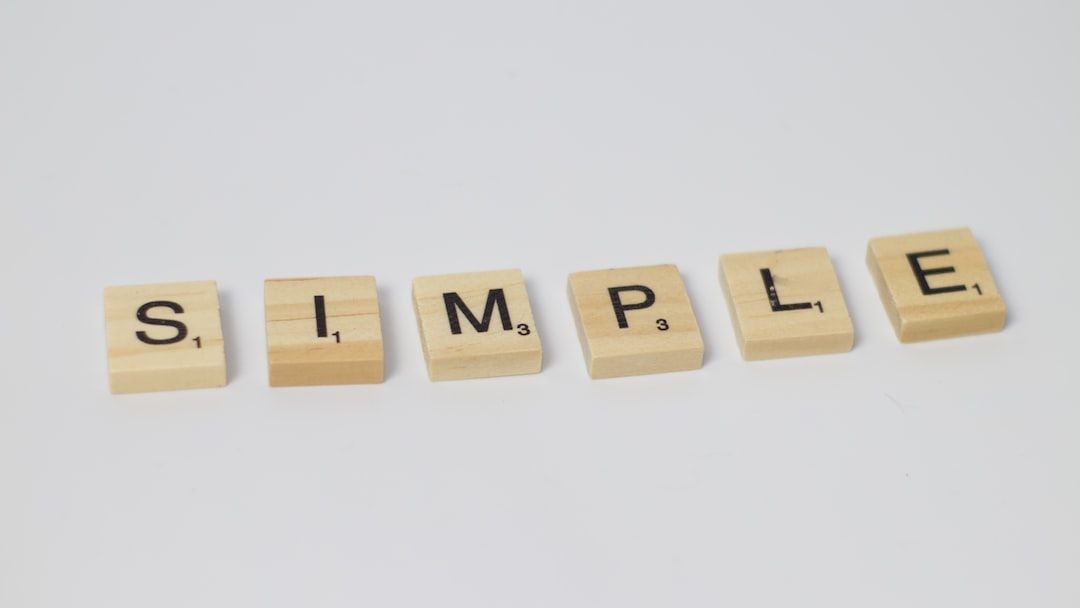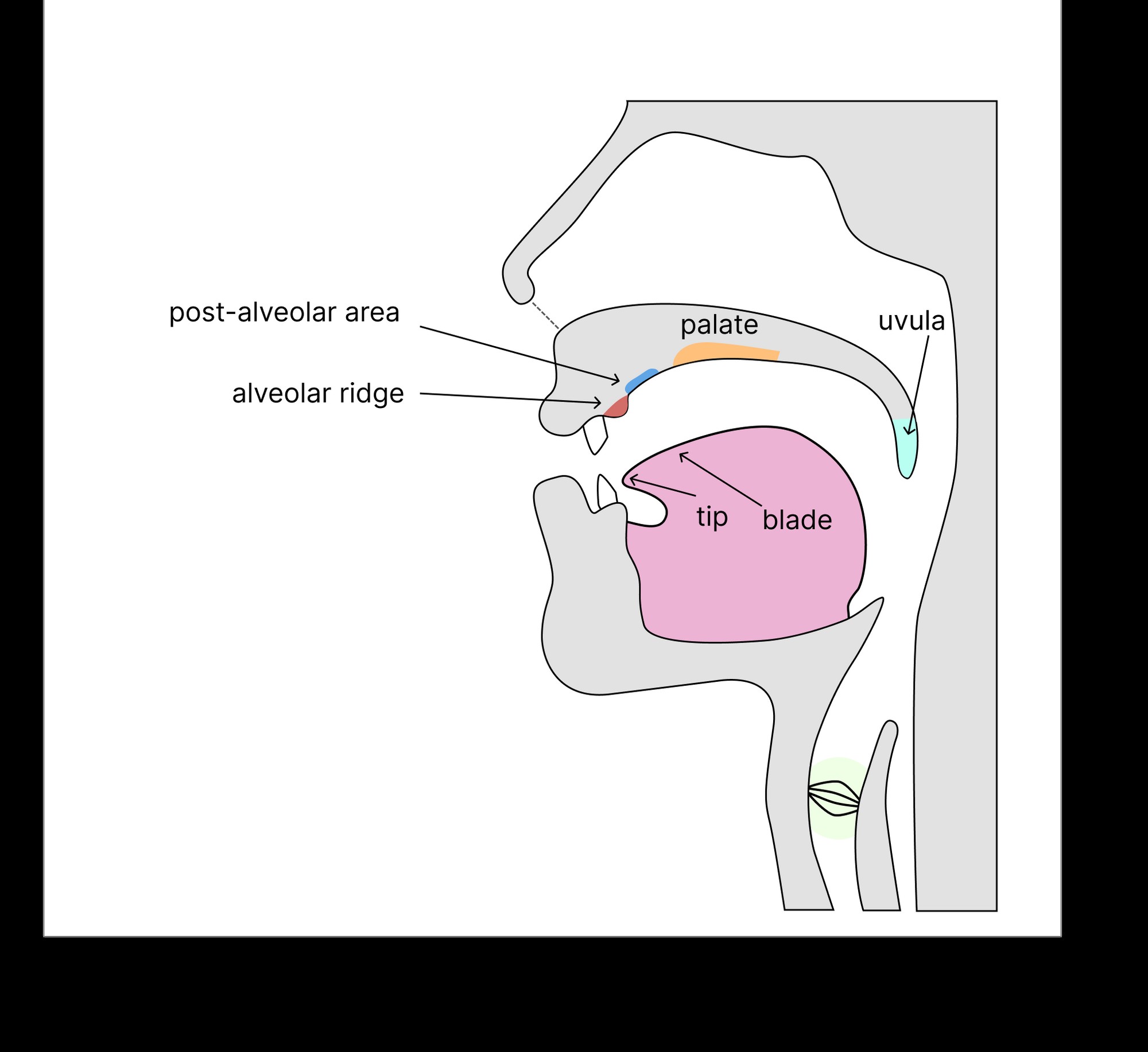Want to master the elusive rolled R? At LEARNS.EDU.VN, we understand the challenge and offer a clear path to success through focused techniques and expert guidance; learn effective articulation and phonetics skills. Unlock the secret to rolling your R’s and enhance your pronunciation.
1. My Accidental Discovery: How I Stumbled Upon the Trill
In my high school days, the catchy tunes of Jesse & Joy’s “¡Corre!” were a constant soundtrack. The only problem? I couldn’t nail those R rolls. I embarked on a mission, armed with YouTube tutorials and a daily dose of experimentation. Weeks turned into frustration as I struggled to grasp the mechanics within my mouth.
Then, fate intervened. A pizza-induced burn, a tongue-massaging reflex, and a well-timed sneeze led to a glorious two-second trill. This accidental breakthrough sparked a journey of retracing steps, leading me to master the trilled R, control its pitch, and even mimic an idling car for my nephew’s amusement.
2. The Three Pillars of the Rolled R: Simplicity is Key
Rolling your R, while seemingly complex, boils down to three crucial factors. Overcomplicating the process is a common pitfall. Let’s simplify.
2.1. Relaxation is Paramount
Imagine gently smacking your belly – the jiggle signifies looseness. Now flex it; the jiggle diminishes. The same principle applies to your tongue. The “rolling” sound arises from your tongue vibrating under the airflow between it and the roof of your mouth. If your tongue is tense, vibration is impossible.
- Too relaxed: You can’t lift your tongue, hindering the R roll.
- Too tense: Vibration is stifled, preventing the R roll.
2.2. The Goldilocks Zone: Space Between Tongue and Alveolar Ridge
Envision a crowd eagerly awaiting the release of a new book, all trying to squeeze through a small doorway. Chaos ensues as people bump and jostle.
Similarly, when producing the rolled R, air struggles to escape through a narrow gap between your tongue and the roof of your mouth. This pressure causes your relaxed tongue to vibrate rapidly.
-
Too low: Air escapes smoothly, preventing the R roll.
-
Too high: Air is blocked, halting the R roll.
Note: Alveolar ridge refers to the area just behind your upper teeth.
2.3. Finding the Sweet Spot: Airflow Strength
Imagine filling a cup at the sink. Too little pressure, no water flows; too much, water splashes everywhere.
Airflow in the mouth requires a similar balance.
- Too weak: No sound is produced, hindering the R roll.
- Too strong: A harsh sound is produced, resulting in a failed attempt (and potentially odd looks).
3. Five Misconceptions That Halted My Progress
Mastering the rolled R isn’t about mechanical complexity. It’s about overcoming initial awkwardness and frustration. These misconceptions often hinder progress:
3.1. Myth: It’s Genetic
The belief that some are simply unable to roll their R’s is false. There are various trill types, achievable with different tongue positions.
Don’t give up; you can do it.
3.2. Myth: Rapid Tongue Slapping
Many tutorials suggest rapidly repeating “butter” to achieve the trill. This is misleading as rolling R’s is an involuntary action caused by airflow through a narrow gap. Forcing the sound tenses the tongue, preventing vibration.
Position your tongue correctly and let physics do the rest.
3.3. Myth: Complex Gymnastics
Overly complicated processes hinder progress. A multistep process with convoluted tongue positions isn’t necessary.
Only two actions are required:
- Lift the tip of your tongue.
- Breathe.
Rolling your R’s doesn’t require a tongue workout.
3.4. Myth: Precede with T or D
While moving from a T or D sound (e.g., “trrrr” or “drrrr”) can position your tongue correctly, it can also be problematic.
T and D are plosives, creating a seal that, when released, “explodes” air. However, the trill requires a gap. Pressing the tongue too hard can also tense it.
Explore the T/D sound for positioning but ultimately drop the consonant.
3.5. Myth: It’s a Variation of the English R
The IPA symbol may be similar, but these sounds differ significantly.
- The English R is a post-alveolar approximant (made in the back of the mouth).
- The Spanish trill is an alveolar trill (made in the front of the mouth).
Clarify what you’re not doing: Say “rose” slowly, focusing on your tongue retracting towards the back of your mouth. The tip doesn’t touch anything. Memorize this; it’s the English R, not the rolled R.
4. The Mechanics of Rolling Your R’s: A Visual Guide
Refer to the animation below for a visual representation.
The tip of your tongue rises toward the back of your front teeth, stopping just short. Air exits, creating turbulence in the narrow gap, causing vibration.
This is an “apical to alveolar” sound: place the tip of your tongue on the gummy ridge behind your upper teeth.
Trills can also be made with different tongue parts and mouth positions. Focus on getting something trilling, even if it’s your throat or lips. Once you understand the mechanics, adjust to the specific sound required for your language.
5. A Step-by-Step Guide to Mastering the Rolled R
This section combines previous insights for a comprehensive, step-by-step approach. While focusing on the Spanish rolled R, these instructions apply universally. Small adjustments will tailor the sound to your specific language.
5.1. Map Your Mouth
Familiarize yourself with the landmarks in your mouth. Identify the tip of your tongue and the alveolar ridge (marked in red).
5.2. Locate Your Alveolar Ridge
Touch the roof of your mouth with the tip of your tongue. “Paint” the roof, sliding your tongue from the back of your teeth to the back of your mouth.
Focus on the front. Slide your tongue back and forth from the back of your teeth about an inch. You’ll feel a hard bump – this is your alveolar ridge.
If you’re having trouble, you’re likely too far back.
The English sounds T, D, S, Z, N, and L originate near the alveolar ridge. Say them slowly, noting your tongue position.
5.3. Relax Your Tongue
After exploring your mouth, release any tension. Relax your tongue to its resting position at the bottom of your mouth.
5.4. Gently Raise Your Tongue Tip
Gently raise the tip of your tongue towards your alveolar ridge. It should feel like a minimal movement.
Only “point” at the front of your alveolar ridge with the tip of your tongue.
Alternative Approach
Lowering your tongue may feel more intuitive:
- Position your tongue to say “toy”.
- Observe your mouth: closed, tongue pressing into the alveolar ridge, potential throat tension.
- Relax your tongue slightly, but not completely.
- Reduce pressure on the alveolar ridge until lightly touching.
- Create a small gap.
- Exhale like hrhhh.
- Physics will handle the rest.
5.5. Part Your Lips
The exact angle isn’t critical; open your lips naturally. Avoid the rounded, protruding shape of the English R.
5.6. Breathe
Experiment with different breathing techniques. Breathe normally, cough, or try saying errr, irrr, arrr, trrrr, drrrrr, brrr, orrr. Each variation slightly adjusts your mouth position; one might work. Reverse engineer a partially successful position and make small adjustments.
Don’t force the trill; focus on airflow through the correct gap.
5.7. Experiment and Play
Success may not be immediate. Making embarrassing noises in front of the mirror is part of the process.
Small adjustments are key: open your mouth wider, move your tongue back, use a stronger breath. Imagine a weight on the back of your tongue, forcing you to only move the tip and breathe.
5.8. Troubleshooting
Remember the three key factors:
- Tongue relaxation
- Gap size
- Airflow strength
With your tongue in roughly the correct position (lifting toward the alveolar ridge), experiment with these factors.
Turbulence creates the sound: excess air attempting to escape through a tiny gap causes your tongue to flap/tap/trill. This is physics, not skill.
Here are a few thoughts, based on my own experimentation:
- Re-read Misconception 5 and focus on the difference between the English and Spanish R.
- If you’re producing an L-like sound, your tongue may be too far back and/or lightly touching the alveolar ridge.
- Gagging, spitting, or making a monster-like groan indicates your tongue is too far back on the roof of your mouth.
- Producing ahhh or uhhh means your tongue isn’t high enough; there’s too much space.
- A normal breath or audible sigh indicates the same problem: your tongue isn’t engaged enough.
- If you produce a sound like the dentist’s suction tube, you’re close! Your tongue is likely angled back and tense. Ease the tip down and towards your teeth.
- Pressure on your tongue indicates you’re too close to the roof of your mouth. Relax and lower your tongue.
- If your tongue feels tired, you’re either lifting the middle or bending the tip back towards your palate. Relax and slightly lift the tip.
- To assess your airflow, try gargling. Mimic that air pressure.
6. A Speech Therapist’s “Hail Mary” Technique
- Lightly place the tip of your tongue against your alveolar ridge (don’t push).
- Tilt your head back, as if looking at a tall building, or lie on a bed with a pillow under your upper back.
- Gravity will naturally create a small gap between your tongue and alveolar ridge.
- Breathe. If you’re lucky, you’ll feel your tongue flutter: an unvoiced alveolar trill.
- Repeat, noting the positions and gaps within your mouth.
- Gradually reduce the head tilt until you can perform the “tongue flutter” normally.
- Add voicing (like turning sssss into zzzzz).
7. Final Thoughts
Unfortunately, there is no one-size-fits-all answer. If you’ve already read numerous articles and watched countless videos, remember that it is okay if you are still struggling. It takes time and dedication to master new sounds.
If you’re feeling stuck, try these steps:
- Bookmark helpful videos/blog posts and revisit them regularly.
- Schedule regular practice times.
- Learn more about your mouth: start with the place of articulation and manner of articulation.
As you learn more about your mouth, you’ll develop more effective experimentation strategies.
Keep practicing, and soon you’ll be rolling your R’s with confidence.
Are you feeling inspired and ready to explore new skills? LEARNS.EDU.VN offers a vast library of articles and courses designed to empower you on your learning journey. Visit LEARNS.EDU.VN today and discover the knowledge waiting for you. Unlock your full potential with expert guidance, structured learning paths, and a supportive community. Start exploring now and transform your learning experience. 123 Education Way, Learnville, CA 90210, United States. Whatsapp: +1 555-555-1212. Website: LEARNS.EDU.VN
FAQ Section
Here are 10 frequently asked questions about learning to roll your R’s:
- Is it really possible for everyone to learn to roll their R’s, or is it genetic?
- It is widely believed that most people can learn to roll their R’s with practice, regardless of genetics. Physical impediments are rare.
- How long does it typically take to learn to roll your R’s?
- The time it takes varies greatly. Some may learn in weeks, others months. Consistency and focused practice are key.
- What are some common exercises to help learn to roll R’s?
- Practicing the “butter” exercise, blowing air while positioning the tongue, and using the speech therapist’s head-tilt method are helpful.
- Are there specific languages where rolling R’s is easier to learn?
- Some find it easier to learn in languages where the sound is more common and naturally integrated into speech.
- What if I have tried everything and still can’t roll my R’s?
- Consider consulting a speech therapist for personalized guidance and to rule out any physical issues.
- Can online resources and apps really help with pronunciation?
- Yes, many online resources and apps provide visual and audio aids, which can be beneficial for learning correct pronunciation.
- How important is it to learn to roll your R’s for language fluency?
- While not always essential, mastering the rolled R can significantly improve pronunciation and fluency in languages where it is common.
- What are the key physical components involved in rolling your R’s?
- The key components are a relaxed tongue, a specific tongue position near the alveolar ridge, and controlled airflow.
- Are there any medical conditions that can prevent someone from rolling their R’s?
- Rarely, conditions affecting tongue movement or structure may hinder the ability to roll R’s.
- How can I stay motivated while learning to roll my R’s?
- Set realistic goals, celebrate small victories, and practice with fun, engaging materials like songs or dialogues.
Enhance Your Learning Journey with LEARNS.EDU.VN
At LEARNS.EDU.VN, we are dedicated to providing comprehensive and accessible educational resources to help you achieve your learning goals. Whether you’re striving to master a new language, enhance your professional skills, or simply expand your knowledge, our platform offers the tools and support you need to succeed.
Explore Our Diverse Range of Courses and Articles
Delve into a wide array of courses and articles meticulously crafted by expert educators and industry professionals. Our content spans various disciplines, ensuring there’s something for everyone, regardless of their interests or skill level. From in-depth language tutorials to cutting-edge technology insights, LEARNS.EDU.VN is your gateway to continuous learning and personal growth.
| Category | Description | Key Benefits |
|---|---|---|
| Language Learning | Comprehensive courses covering grammar, pronunciation, vocabulary, and cultural nuances. | Improve fluency, communicate effectively, and connect with diverse cultures. |
| Professional Skills | Courses designed to enhance your career prospects, including project management, data analysis, and leadership skills. | Increase job performance, advance your career, and stay competitive in the job market. |
| Personal Development | Resources focused on mindfulness, stress management, and effective communication to improve overall well-being. | Enhance emotional intelligence, reduce stress, and build stronger relationships. |
| Technical Skills | Tutorials and courses on coding, web development, cybersecurity, and other in-demand technical skills. | Gain practical skills, build innovative projects, and pursue lucrative career opportunities in the tech industry. |
| Creative Arts | Workshops and guides on photography, writing, graphic design, and music to unleash your creative potential. | Express yourself artistically, develop new hobbies, and find creative outlets for relaxation and personal fulfillment. |
| Academic Enrichment | Resources covering a wide range of academic subjects, from mathematics to history, designed to deepen your understanding. | Excel in your studies, expand your intellectual horizons, and achieve academic success. |






Stay Updated with the Latest Educational Trends
At LEARNS.EDU.VN, we pride ourselves on staying ahead of the curve by incorporating the latest educational trends and technologies into our content. Our team continuously updates our resources to reflect the most current information and effective learning strategies.
| Trend | Description | Benefits for Learners |
|---|---|---|
| Personalized Learning | Tailoring educational content and methods to suit individual learning styles and paces, using AI and data analytics to optimize the learning path. | Enhanced engagement, improved learning outcomes, and a more efficient use of study time. |
| Microlearning | Breaking down complex topics into small, easily digestible modules that can be accessed on the go. | Increased retention, flexible learning schedule, and the ability to focus on specific skills or knowledge gaps. |
| Gamification | Incorporating game-like elements into the learning process, such as points, badges, and leaderboards, to motivate learners and make education fun. | Enhanced motivation, increased participation, and a more enjoyable learning experience. |
| Virtual and Augmented Reality | Immersive learning experiences that simulate real-world scenarios, allowing learners to practice skills in a safe and engaging environment. | Improved practical skills, deeper understanding of concepts, and enhanced problem-solving abilities. |
| Mobile Learning | Educational content optimized for mobile devices, allowing learners to access resources anytime, anywhere. | Increased accessibility, flexible learning schedule, and the ability to learn on the go. |
Connect with a Community of Learners
Join our vibrant community of learners from around the globe. Share your experiences, ask questions, and collaborate with others on projects. LEARNS.EDU.VN fosters a supportive and inclusive environment where everyone can thrive.
Transform Your Learning Experience Today
Visit learns.edu.vn and embark on a transformative learning journey. Discover the knowledge, skills, and inspiration you need to achieve your goals and unlock your full potential. Our expert guidance, structured learning paths, and supportive community are here to help you every step of the way.
Address: 123 Education Way, Learnville, CA 90210, United States
WhatsApp: +1 555-555-1212
Website: LEARNS.EDU.VN